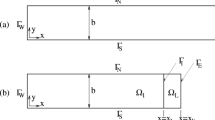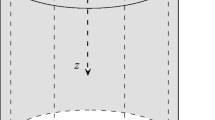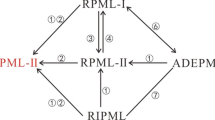Abstract
As soon as people have been interested in the numerical simulation of wave propagation phenomena, particularly in the time domain, they had to face the delicate question of realizing “transparent” artificial boundaries. Indeed, many problems of this type are posed in a unbounded domain (or in a domain which is very large with respect to a zone of interest in which one wishes to observe the solution): one thus has to bound artificially the computational domain in such a way that the non physical boundaries are “transparent” for the solution. Due to the crucial importance of this subject, but also because of its difficulty, this question has aroused the curiosity from many researchers, first from engineers, next from applied mathematicians. It would be much too ambitious to give a complete panorama of a research that began almost forty years ago (see however the article by T. Hagstrm [20] which constitutes a quite complete review of the domain) but one can now measure how much the many ingenious ideas proposed by the one or the others have permitted to accomplish impressive progress in this matter. Nowadays, if one restricts oneself to linear wave propagation problems, one can consider that, even though some questions remain open, satisfactory solutions are available for a large number of applications, in particular in the “canonical case” I will have in mind throughout this paper, namely the case where one wishes to reduce numerical computations to a convex bounded domain, assuming that the exterior domain is homogeneous and source free.
Recently, in particular for the applications in acoustics and electromagnetism, important progress has been achieved in the use of “exact” boundary conditions associated to homogeneous exterior domains. One usually introduces a boundary operator called “Dirichlet to Neumann” (DtN) operator that can be represented by using separation of variables in the exterior domain (in 3D, one will use typically spherical harmonics [19], which requires a spherical artificial boundary) or through the coupling with an integral representation formula of the exterior solution (which relies on the explicit knowledge of the Green’s function of the problem) [4].
Similar content being viewed by others
References
S. Abarbanel and D. Gottlieb. A mathematical analysis of the PML method. J. Comput. Phys, 134(2):357–363, 1997.
S. Abarbanel, D. Gottlieb, and J. S. Hesthaven. Well-posed perfectly matched layers for advective acoustics. J. Comput. Phys., 154(2):266–283, 1999.
S. Abarbanel, D. Gottlieb, and J.S. Hesthaven. Long time behavior of the perfectly matched layer equations in computational elactromagnetics. SIAM J. Scientific Comp., 17(1–4):405–422, 2002.
B. Alpert, L. Greengard, and T. Hagstrom. Nonreflecting boundary conditions for the time-dependent wave equation. J. Comput. Phys., 180:270–296, 2002.
B.A. Auld. Acoustic fields and elastic waves in solids. volume I et II. Wiley, 1973.
E. Bécache, S. Fauqueux, and P. Joly. Stability of perfectly matched layers, group velocities and anisotropic waves. to appear.
E. Bécache, P. G. Petropoulos, and S. Gedney. On the long-time behavior of unsplit perfectly matched layers. Technical Report 4538, INRIA, 2002.
J. P. Bérenger. A Perfectly Matched Layer for the Absorption of Electromagnetic Waves. J. of Comp. Phys., 114:185–200, 1994.
J.P. Bérenger. Three-dimensional perfectly matched layer for the absorption of electromagnetic waves. J. of Comp. Phys.,, 127:363–379, 1996.
E. Bécache and P. Joly. On the analysis of Bérenger’s perfectly matched layers for Maxwell’s equations. M2AN Math. Model. Numer. Anal., 36(1):87–119, 2002.
F. Collino and P. Monk. Optimizing the Perfectly Matched Layer. Comp. Meth. Appl. Mech. Engrg, 164:157–171, 1998.
F. Collino and P. Monk. The Perfectly Matched Layer in curvilinear coordinates. SIAM J. Scient. Comp., 164:157–171, 1998.
J. Diaz and P. Joly. A time domain analysis of PML models in acoustics. Comput. Methods Appl. Mech. Engrg., 195(29–32):3820–3853, 2006.
Julien Diaz and Patrick Joly. An analysis of higher order boundary conditions for the wave equation. SIAM J. Appl. Math., 65(5):1547–1575 (electronic), 2005.
B. Engquist and A. Majda. Absorbing boundary conditions for the numerical simulation of waves. Math. Comp, 31:629–651, 1977.
B. Engquist and A. Majda. Radiation boundary conditions for acoustic and elastic wave calculations. Comm. Pure Appl. Math., 32:314–358, 1979.
S. Fauqueux. Eléments finis mixtes spectraux et couches absorbantes parfaitement adaptées pour la propagation d’ ondes élastiques en régime transitoire. PhD thesis, Université Paris IX, 2003.
Leslie Greengard and Vladimir Rokhlin. A new version of the fast multipole method for the Laplace equation in three dimensions. In Acta numerica, 1997, volume 6 of Acta Numer., pages 229–269. Cambridge Univ. Press, Cambridge, 1997.
M. J. Grote and J. B. Keller. Exact nonreflecting boundary conditions for the time dependent wave equation. SIAM J. Appl. Math., 55:280–297, 1995.
T. Hagström. Radiation boundary conditions for the numerical simulation of waves. cta Numerica, 8, 1999.
R. L. Higdon. Initial-boundary value problems for linear hyperbolic systems. SIAM Review, 28(2):177–217, 1986.
F. Q. Hu. A stable, perfectly matched layer for linearized Euler equations in unsplit physical variables. J. Comp. Phys., 173:455–480, 2001.
M. Israeli and S. Orszag. Approximation of radiation boundary conditions. J. Comput. Phys., 41(1):115–135, 1981.
T. Ha Duong P. Joly. On the stability analysis of boundary conditions for the wave equation by energy methods; Part I: The homogeneous case. Math. of Comp., 62(206):539–563, 1994.
T.Ha Duong P. Joly. The energy method for the heterogeneous wave equation with high order boundary conditions.. Southeast Asian Bull., 19(2):67–75, 1995.
H. O. Kreiss. Initial boundary value problems for hyperbolic systems. Comm. Pure Appl. Math., 23:277–298, 1970.
H-O. Kreiss and J. Lorenz. Initial-Boundary Value Problems and the Navier-Stokes Equations. In Pure and Appl. Math., volume 136. Academic Press, Boston, USA, 1989.
P. G. Petropoulos, L. Zhao, and A. C. Cangellaris. A reflectionless sponge layer absorbing boundary condition for the solution of Maxwell’s equations with high-order staggered finite difference schemes. J. Comput. Phys., 139(1):184–208, 1998.
A. N. Rahmouni. Des modéles PML bien posés pour divers problèmes hyperboliques. PhD thesis, Université Paris Nord-Paris XIII, 2000.
F. L. Teixeira and W. C. Chew. Unified analysis of perfectly matched layers using differential forms. Microw. Optical Technol. Lett., 20(2):124–126, 1999.
L. N. Trefethen and L. Halpern. Well-posedness of one-way wave equations and absorbing boundary conditions. Math. Comp., 47, 1986.
L. Zhao and A. C. Cangellaris. A General Approach for the Deveopment of Unsplit-Field Time-Domain Implementations of Perfectly Matched Layers for FDTD Grid Truncation. IEEE Microwave and Guided Letters, 6(5), May 1996.
Author information
Authors and Affiliations
Corresponding author
Rights and permissions
About this article
Cite this article
Joly, P. An elementary introduction to the construction and the analysis of perfectly matched layers for time domain wave propagation. SeMA 57, 5–48 (2012). https://doi.org/10.1007/BF03322599
Received:
Accepted:
Published:
Issue Date:
DOI: https://doi.org/10.1007/BF03322599




